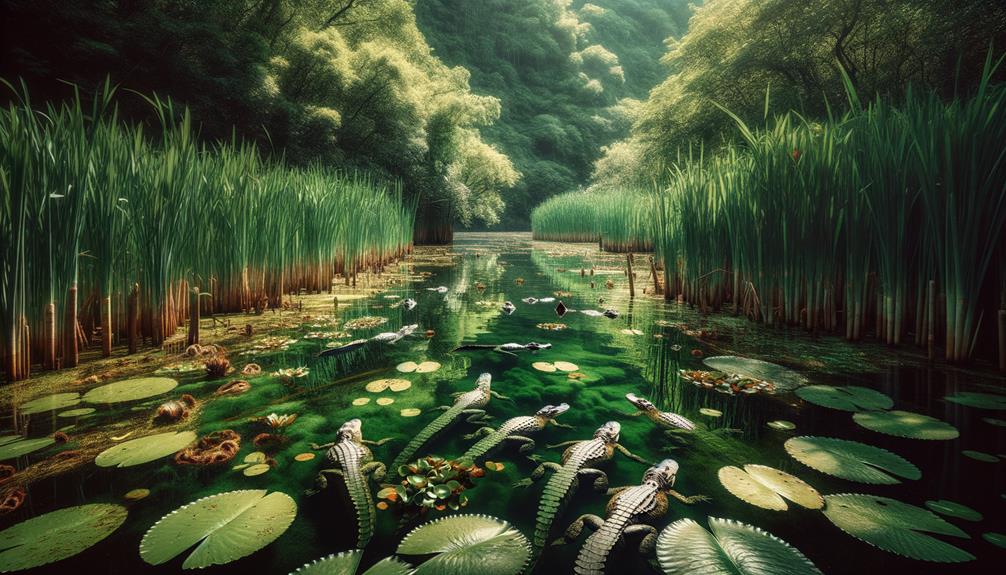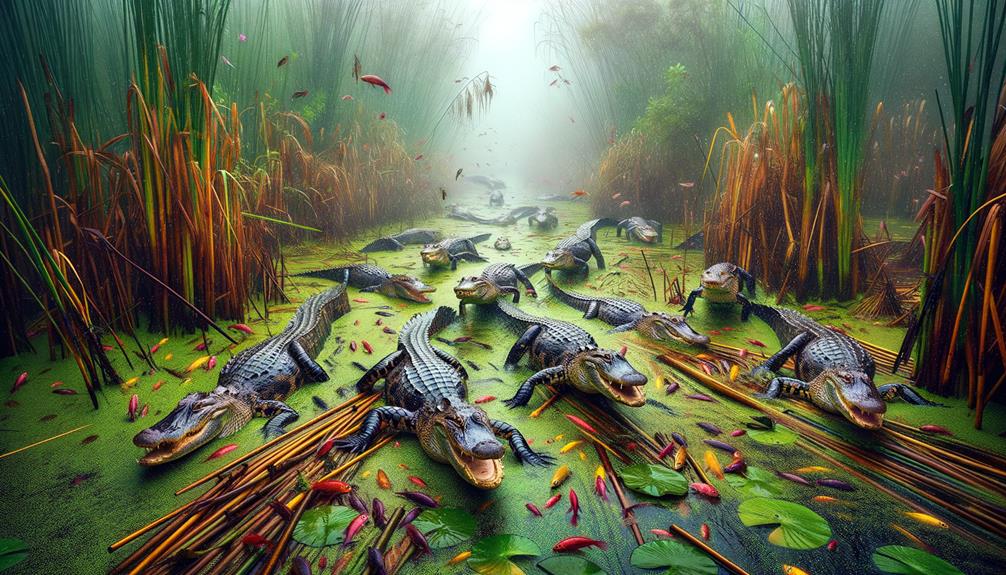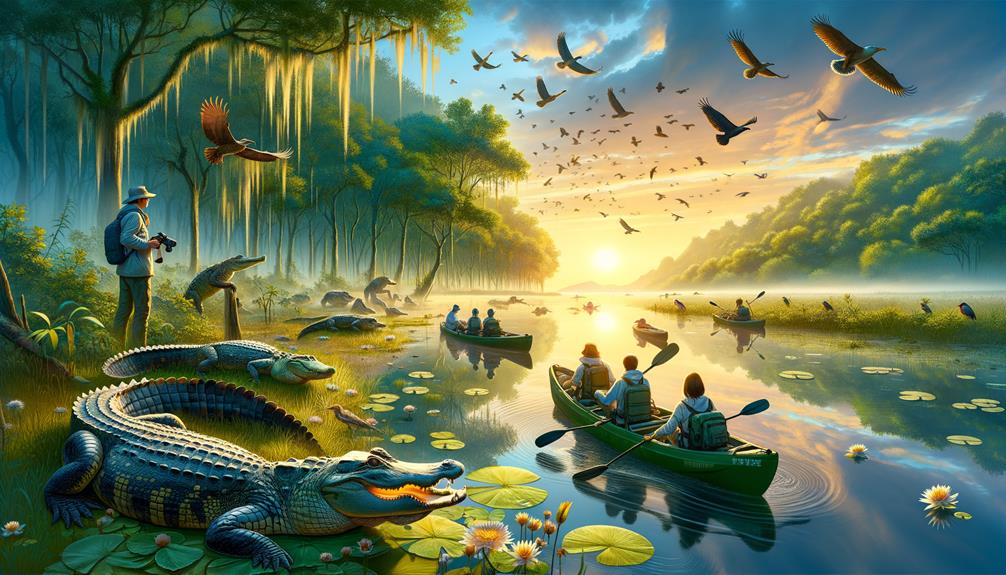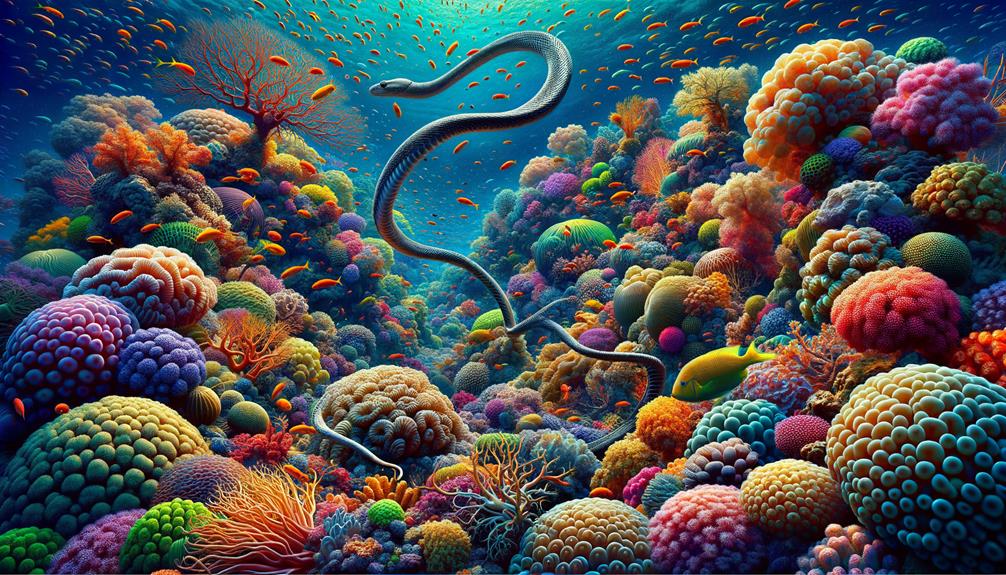Picture a Chinese alligator, one of the few left, quietly moving through the lush waterways of the Yangtze wetlands. Its eyes barely break the surface as it surveys its age-old home. This ecosystem buzzes with life, offering these scarce reptiles a rich network of plants and prey. But human activities, especially farming, are putting their survival at risk. We need to talk about how to bring these wetlands back to health and ensure Chinese alligators have a future. The big question is: How do we meet human needs while also protecting this crucial habitat?
Physical Description
Chinese alligators stand out from their American relatives, typically reaching lengths of up to 5 feet with sturdy heads and slightly upturned snouts. Their unique features caught my eye when I first researched them. These reptiles sport bony plates called osteoderms on their bellies, giving them an almost armored appearance and extra protection.
What sets Chinese alligators apart isn't just their size, but also some interesting physical traits. Unlike their American cousins, they lack a bony plate in their eyelids, which changes how their eyes look. While they usually top out around 5 feet, the biggest one on record stretched to 7 feet 1 inch, tipping the scales between 23 to 38.5 kilograms.
A closer look at their robust heads reveals the slightly upturned snout, adding to their distinct profile. These physical traits not only make them fascinating creatures but also highlight how well they've adapted to their environments. As I continue to learn about Chinese alligators, I'm struck by how these unique features have helped them thrive in their specific habitats.
Habitat and Environment

The Chinese alligators make their home in the rich wetlands of the Yangtze River basin. This area is a maze of waterways, thick plant life, and plenty of food sources. The calm waters and dense greenery provide an ideal refuge for these creatures to hunt, conceal themselves, and build nests. The complex system of streams and marshes in the basin maintains a fragile equilibrium crucial for the alligators' existence.
But this natural sanctuary faces big challenges. Human activities like farming and city growth have severely reduced the wetlands. This shrinking habitat puts the alligators at risk and threatens the complex web of life in this ecosystem. Protecting these areas is vital – it's not just about saving one species, but preserving a rich, diverse environment that supports countless other creatures.
Efforts to restore and maintain the Yangtze River basin are key. Conservation programs focus on protecting habitats, educating the public, and breeding initiatives. By prioritizing these actions, we can work towards ensuring the Chinese alligators and their watery home continue to thrive for years to come.
Diet and Feeding Habits

Wading through the Yangtze River basin's wetlands, you'd notice Chinese alligators' eating habits are key to their survival. These reptiles aren't picky eaters, chowing down on whatever's available in their habitat. Their menu includes snails, crabs, bugs, fish, and sometimes even young birds and small mammals. This adaptability ensures they can make do with whatever food is around.
Take a look at their teeth, and you'll see they're built for the job. Those flat chompers are perfect for crunching through snail shells. Research shows snails make up a whopping 63% of what they eat in the wild. At zoos like the National Zoo, keepers give them rats, mice, and fish to match their natural diet.
These scaly hunters prefer the night shift, prowling after dark. This tactic helps them avoid competing with other predators and lets them snag nocturnal prey more easily. Their sharp senses and stealthy moves make them effective hunters in the dark. By understanding how these impressive creatures eat, we get a clearer picture of their role in the Yangtze wetlands' ecosystem.
Reproduction and Development

Chinese alligators have remarkable breeding habits that showcase their toughness and flexibility. Female alligators lay between 10 and 40 eggs in carefully built mound nests. This strategy protects the eggs from both predators and harsh weather. Male alligators mate with several females, which helps keep the gene pool diverse.
Young alligators need about 5 to 7 years to become sexually mature. This growth period is crucial for them to join the breeding population. Chinese alligators can live up to 70 years in captivity, which is a big plus for breeding and conservation efforts. Researchers have noticed that reintroduced alligators are successfully breeding, showing they can adjust well to managed environments.
Quick facts about their breeding and growth:
| Trait | Details |
|---|---|
| Nest size | 10 to 40 eggs |
| Mating habit | Males mate with multiple females |
| Age of sexual maturity | 5 to 7 years |
| Lifespan in captivity | Up to 70 years |
| Breeding success | Seen in conservation projects |
The alligators' ability to reproduce and adapt is key to their survival. This ensures that future generations can thrive both in the wild and in protected areas.
Conservation Efforts

Saving the Chinese alligator requires a multi-pronged strategy encompassing habitat renewal, breeding programs, and public awareness. With wild populations dwindling to about 120, urgent action is crucial. Current initiatives involve releasing captive-bred alligators into their natural environments, boosting their chances of survival.
Key threats include habitat destruction, environmental contamination, and illegal hunting. To counter these, conservationists are focusing on cleaning and restoring the Yangtze River wetlands. These actions aim to create a more viable and secure ecosystem for the alligators to inhabit and reproduce.
Teaming up with Chinese officials is vital. Joint projects and strict regulations help ensure the success of reintroduction efforts and curb unlawful activities like poaching. Community outreach programs also play a significant role. By informing locals about the value of preserving this species, conservationists hope to cultivate a sense of environmental responsibility.
The road ahead isn't easy, but with concerted efforts from scientists, government bodies, and local communities, there's hope for the Chinese alligator's future. Every small step towards protection and habitat improvement could make a significant difference in the long-term survival of this unique species.
Frequently Asked Questions
Does the Yangtze River Have Crocodiles?
While the Yangtze River isn't home to crocodiles, it does house the Chinese alligator, a species facing serious threats. These reptiles have made the river's freshwater environment their home, but their numbers have dropped sharply. The main culprits? Habitat destruction and deterioration. It's a stark reminder of how human activity can impact wildlife, even in one of the world's mightiest rivers.
Why Are There so Few Chinese Alligators?
Chinese alligators are facing a dire situation. Their numbers have plummeted due to habitat loss and pollution. Rice farming has taken over much of their wetland homes, pushing these creatures to the edge of disappearing completely. Without quick action to protect them, we might lose these unique animals forever.
The main reasons for their decline are clear:
- Chopped-up habitats: As humans expand into alligator territory, the animals are left with smaller, disconnected areas to live.
- Dirty water and food: Pollution from farming and industry makes it hard for alligators to find clean water and safe food.
- Rice fields everywhere: Farmers have turned wetlands into rice paddies, leaving alligators with nowhere to go.
Experts agree that saving Chinese alligators requires immediate attention. We need to set aside protected areas, clean up their environment, and find ways for people and alligators to coexist. Without these steps, we risk saying goodbye to an ancient species that's been around since the time of dinosaurs.
What Is the Predator of a Chinese Alligator?
It's shocking to learn that only about 150 Chinese alligators still live in their natural habitat. While birds of prey like eagles and hawks pose a threat, particularly to young alligators, human activities remain the biggest risk to their survival. Poaching, in particular, has pushed these ancient reptiles to the brink of extinction. Conservation efforts are crucial to protect these rare creatures from disappearing entirely. Their plight highlights the urgent need for better wildlife protection measures and stricter enforcement against illegal hunting practices.
Are Chinese Alligators Aggressive?
Chinese alligators aren't typically aggressive creatures. They tend to be wary of people and usually keep their distance. If they feel threatened, they might react defensively, but for the most part, these reptiles prefer to avoid confrontation. To minimize the chance of any hostile encounters, it's best to give them their space and observe from afar.



